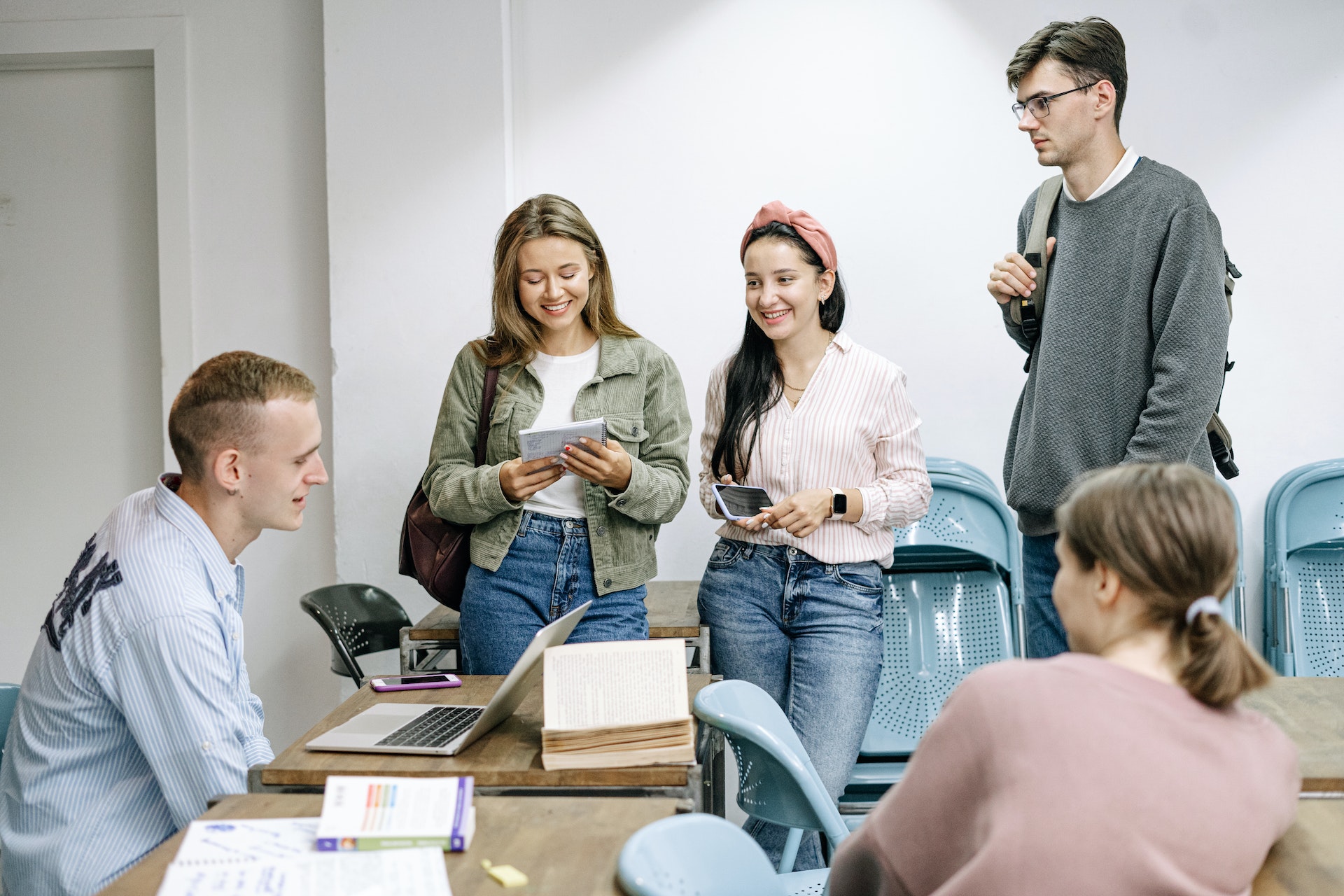Active learning is an educational approach where learners actively engage in the learning process, rather than passively absorbing information. It emphasizes the importance of students taking ownership of their learning by participating in problem-solving, critical thinking, collaboration, and self-reflection. This approach fosters a more in-depth understanding of concepts, enhances retention, and promotes the development of higher-order thinking skills. In active learning, instructors act as facilitators, guiding students towards discovering knowledge and constructing their own understanding. Chris Drew published an article in April 2023 with examples of active learning methods.
Advantages of Active Learning
Active learning offers numerous advantages, contributing to a more enriching educational experience. One significant advantage is that it promotes more profound understanding, as students actively engage with the material, analyse concepts, and apply their knowledge in various contexts. This process not only enhances retention, but also fosters the development of critical thinking and problem-solving skills, which are essential for success in today’s rapidly changing world.

Active Learning means discussion, collaboration, exchange of knowledge and experience, as well as benefiting from others in the training process.
Another benefit of active learning is that it encourages collaboration and communication among learners. By working together, learners can share ideas, challenge each other’s perspectives, and learn from their peers’ experiences. This collaborative approach helps Learners build strong interpersonal skills and cultivates a sense of community within the classroom.
The added value of active learning lies in its ability to equip learners with the skills and knowledge necessary to become lifelong learners. As they take ownership of their learning, students develop a sense of autonomy and self-direction, which empowers them to adapt to new situations and continue learning throughout their lives. Overall, active learning fosters a more engaging and effective educational experience that prepares students to excel both academically and professionally.
Adult Education implementation
Implementing active learning in adult education can be achieved through a variety of methods and settings, which can be customized to suit the needs and interests of adult learners. One such setting is a classroom environment, where instructors can utilize techniques like group discussions and debates to encourage critical thinking and active participation. By allowing adult learners to exchange ideas, challenge one another, and build on their peers’ perspectives, instructors can create an engaging and collaborative atmosphere.
Another setting to implement active learning in adult education is through workshops and hands-on training sessions. In these environments, adult learners can actively engage with the material by participating in practical exercises, simulations, or role-plays. These activities not only help learners apply their knowledge in real-world scenarios but also enhance their problem-solving and decision-making skills.
Online learning platforms also offer an excellent opportunity to implement active learning for adult education. Through interactive tools such as discussion forums, virtual classrooms, and multimedia resources, adult learners can collaborate, discuss concepts, and engage with the content. Instructors can also provide real-time feedback and guidance, fostering a supportive and interactive learning experience.
In community-based adult education programs, active learning can be integrated by organizing group projects that address local issues or concerns. By working together to find solutions, adult learners can develop their teamwork, communication, and leadership skills while contributing positively to their community.
Overall, implementing active learning in adult education requires careful planning and consideration of the learners’ needs, interests, and backgrounds. By utilizing a range of settings and techniques, instructors can create a dynamic and engaging learning experience that supports adult learners in achieving their educational goals.
Do Seniors like Active Learning
The attitude of the 50+ generation towards active learning may vary depending on individual preferences, backgrounds, and prior experiences. Some seniors might appreciate the benefits of active learning, as it can provide a more engaging and stimulating learning experience, which can be particularly valuable as cognitive abilities change with age. Engaging in active learning can help seniors maintain cognitive sharpness, foster social connections, and support lifelong learning.

Seniors also like to learn in groups – if they know the added value and why this type of learning is important.
However, from a critical standpoint, seniors who have grown up with more traditional educational methods might be hesitant or resistant to embrace active learning approaches. They might perceive these methods as unfamiliar or challenging, especially if they have not been previously exposed to such techniques or if they are less comfortable with technology. Additionally, some seniors might prefer more structured, passive learning experiences, as they may feel these provide a clearer and more predictable learning path.
It is essential to recognize that the preferences and attitudes of the 50+ generation towards active learning are diverse and multifaceted. To facilitate a successful learning experience, it is crucial to tailor the active learning approach to the specific needs, expectations, and learning styles of the seniors involved, while providing support and encouragement for those who might be hesitant to participate.
Flipped Learning 3.0 is based on active learning
The Flipped Learning 3.0 Approach is an innovative educational framework and not so common in Adult Education. The framework is based on shifting the traditional classroom structure, where learners are introduced to new content at home and then practice and apply their knowledge in the classroom (or in a homework). This approach can effectively implement active learning by focusing on learner-centered activities and maximizing in-class collaboration and engagement.
In the Flipped Learning 3.0 approach, the initial phase involves students accessing instructional materials, such as interactive video(1), readings, or podcasts, or other activities before attending the class. This allows learners to familiarize themselves with the concepts at their own pace and develop a foundational understanding of the subject. By completing this preparatory work outside the classroom, learners can dedicate their in-class time to engaging in active learning activities. The preparatory work is called pre-class or “Individual Learning Space“.
D uring the in-class sessions, instructors act as facilitators, guiding students through collaborative and interactive activities. These activities might include problem-solving exercises, group discussions, case studies, or hands-on projects (to name some examples). By working together, learners can deepen their understanding of the concepts, apply their knowledge to real-world situations, and develop critical thinking and communication skills. Instructors can also provide immediate feedback and support, ensuring that students are on the right track and addressing any misconceptions or difficulties that may arise. This on-site training is called the “Group Learning Space“.
uring the in-class sessions, instructors act as facilitators, guiding students through collaborative and interactive activities. These activities might include problem-solving exercises, group discussions, case studies, or hands-on projects (to name some examples). By working together, learners can deepen their understanding of the concepts, apply their knowledge to real-world situations, and develop critical thinking and communication skills. Instructors can also provide immediate feedback and support, ensuring that students are on the right track and addressing any misconceptions or difficulties that may arise. This on-site training is called the “Group Learning Space“.
One key aspect of the Flipped Learning 3.0 Approach is the emphasis on individualized learning. Since learners have different learning styles, needs, and abilities, instructors can use various in-class activities and resources to cater to these diverse needs. This may involve providing additional materials, offering one-on-one support, or facilitating peer-to-peer tutoring. By addressing each student’s unique learning requirements, the Flipped Learning 3.0 Approach can create a more inclusive and engaging learning environment.
In summary, implementing active learning using the Flipped Learning 3.0 Approach involves a combination of pre-class preparation, in-class collaboration, and individualized support. This model not only encourages student engagement and autonomy, but also allows for the development of higher-order thinking skills and fosters a more profound understanding of the subject.
(1) An interactive video is a multimedia presentation that incorporates user-driven elements, such as clickable hotspots, quizzes, or branching scenarios, allowing viewers to actively engage with the content and make choices that influence the outcome or progression of the video.

